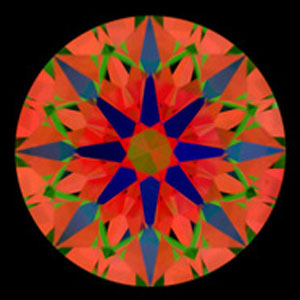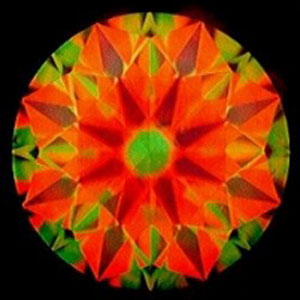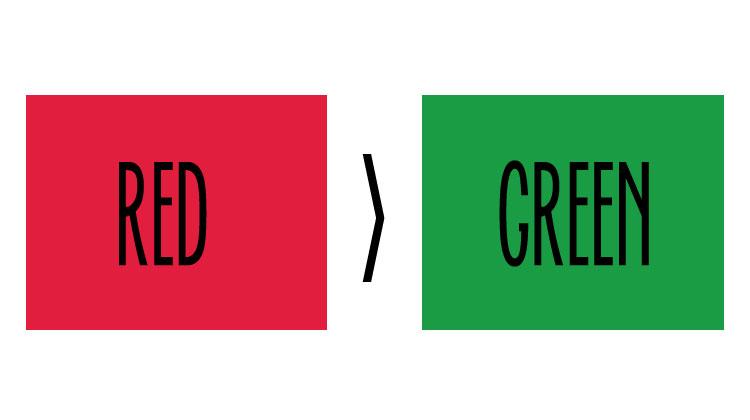Today I am going to be answering the question; is red better than green in an ASET?
In my tutorials, I have shown you what a perfect ASET for a round brilliant diamond should look like. But for some vendors, it isn’t the standard practice to provide an ASET image. The reason that has recently come to light is because of the difficulty in obtaining decent repeatable ASET imagery.
This initially surprised me somewhat as the same trouble doesn’t seem to plague the idealscope at first glance. In fact, the ASET, developed by AGS, is arguably the more advanced technology with both desktop and handheld models. It seems only logical that the more expensive and complicated desktop version should be able to produce better imagery. But apparently this isn’t the case, and some vendors have reportedly had trouble with their ASET imagery using the desktop model.
I personally own the hand-held model and when accompanied with an ideal-light, I can testify to its ease of use. The reason why sometimes the more complicated desktop version seems to have problems is because in a retail environment, the vendor is dealing with many different sizes and shapes of diamonds and it is impossible to have one properly calibrated set-up that works for all diamonds.
The handheld version seems to outperform only because it is actually more flexible to use as the user can compensate for the diamond’s size and shape. When using the ideal-light I can see that unexpected results would occur if I tried to use it with a very large diamond for example. I shall be looking at how to take photographs of diamonds, including the ASET in my next tutorial, which should be interesting so stay tuned for that.
Suffice to say for now that all ASET imagery of MRBs should have some mix of red, green, and blue and if there is a lack in one color then it points to some kind of error in the photography set up. The same should be the case with non-rounds but I won’t make a blanket statement here about fancy cuts, as there may be the possibility that there is a type of cut that minimises head shadow and body obstruction. The first image below is of a properly taken ASET image and the second is an image taken with some error in the photography set up.


Now, the idealscope and the ASET are both mechanical devices and the concept behind them are rather simple. The colored parts on the devices act as a filter so that the incident light on the diamond picks up that color. You see that color of the reflected light when viewed through the lens of the scope. It is all much easier to grasp when you have one of these devices in your hand.
So when is more green preferable to more red in an ASET? This question is really more applicable to fancy cuts rather than the modern round brilliant (MRB) diamonds where I specialise. This is because more red than green is definitely preferable in MRBs. In MRBs, we are actually looking to see an expected pattern that has a particular balanced distribution of even reds, even greens, and even blues.
But in fancy cuts, it is never the question of whether red is better or green because both red and green indicate light return, just from different angles. I would say more red is the preferred method of light return in most cases because more green means that more of the light is being returned from closer to the periphery and can usually pick up more unexpected colors. The reason why people say that it is a personal preference is because what is usually more preferable than simply more red over more green is that the return of light is balanced throughout the diamond.
That means if most of the diamond is green and only a part of it is red, then it is probably less preferable than the one that has green throughout but with an even distribution of red, even if there is less of it. Although there isn’t a particular expected pattern in fancy cuts because of the variations in cutting and proportions, the general principles of balance and distribution of reflected light that we know from analysis of the MRBs also apply for fancy cuts.
In conclusion, the simple answer to this question is yes for modern round brilliants, but no for fancy cut diamonds! At the end of the day, the ASET, when taken properly can reveal more information about the diamond than the idealscope. But if the bottom of the ASET device isn’t lined up with the plane of the girdle of the diamond, or if the diamond is tilted, then you won’t get the expected results. When vendors try to take consistent imagery for professional or retail purposes, expect larger sized diamonds and more complicated shapes to cause unexpected issues in ASET photographs.
